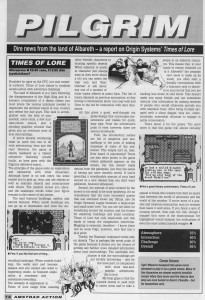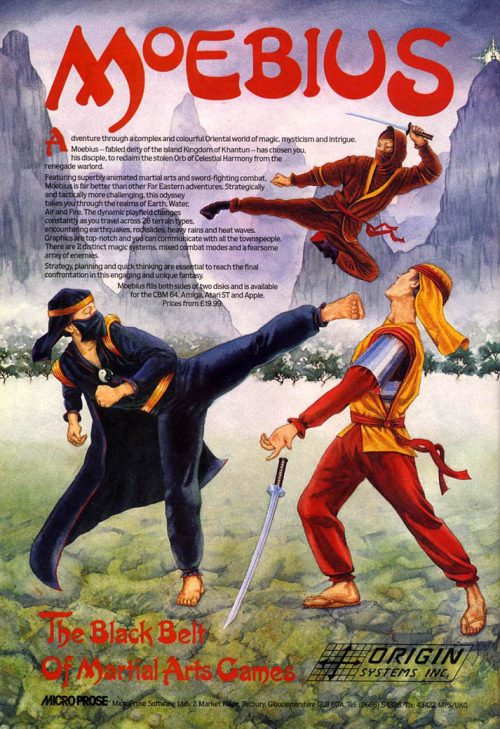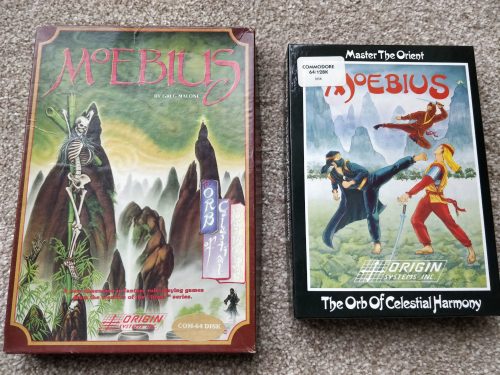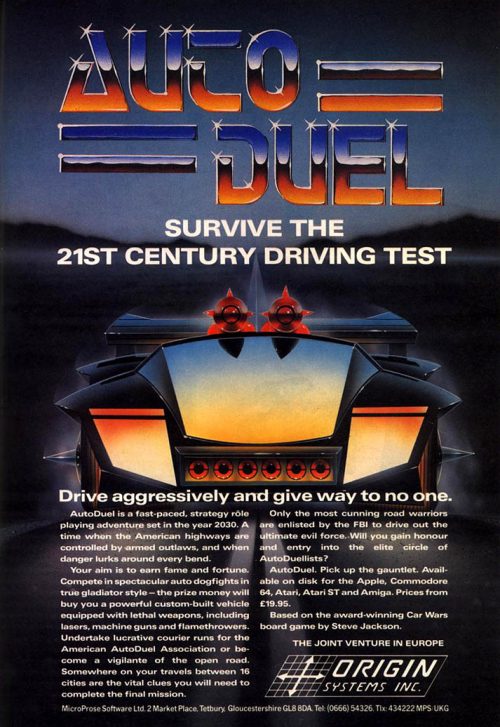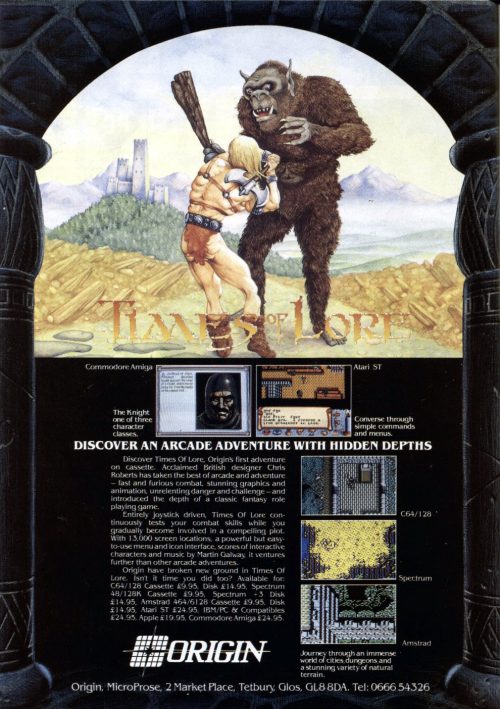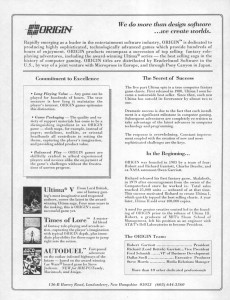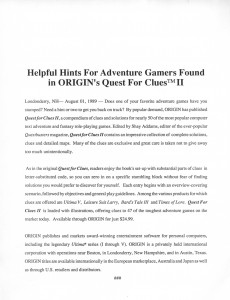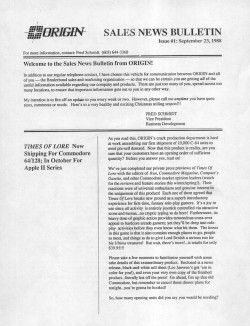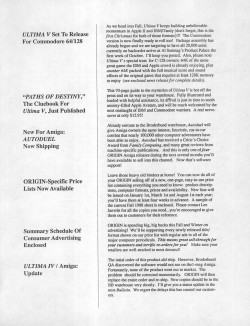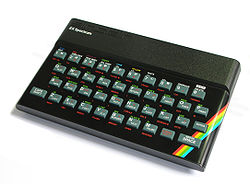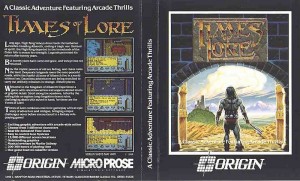I’m not going to get chance to start SNES Ultima 7 for at least a couple of weeks so I thought instead I’d have a quick look at the only game Origin ever put out for the Amstrad CPC which was a port of Chris Robert’s Times Of Lore. Times Of Lore was in development prior to Chris Robert’s joining Origin and he was targeting his home UK audience who for the most part didn’t have disk drives. This meant it was originally designed to be loaded by tape on a C64 which ultimately made it possible to port the game to two of the more European based computers the ZX Spectrum and the Amstrad CPC. It’s quite a different design philosophy to that typically used by Origin whose games had always been large multi-disk affairs right from the beginning. This divide was very much evident between many US and UK games houses in general in the 8 bit era.
Ironically, the Amstrad was one of the earlier mass market computers over here to have the option of a built-in disk drive back in the later half of 1985. It used the far from standard 3″ disks which would also be used on later models of the ZX Spectrum once Amstrad had acquired the company. This meant that some of the disk based games such as Infocom’s classic text adventures made appearances on the CPC which would have been reason enough to own one in my eyes if an Amiga or ST was out of your price bracket. As such it could definitely have handled ports of the early Ultima games but we sadly never saw any as bemoaned in the October 1988 Amstrad Action magazine:-

It was only a handful of months later that Times Of Lore saw it’s release however on cassette and disk for CPC both of which are essentially identical except for the difference in loading times. Either was still mercifully faster than Robert’s previous game Stryker’s Run on the BBC Master which I can report from experience takes around 15-20 minutes to load off a tape giving it the longest loading time of any game I’ve ever come across.
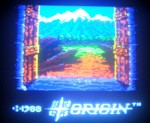
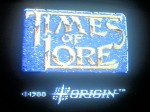
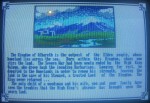
Initial impressions of this port are mixed. All of Martin Galway’s title and intro tunes are present along with the all the introduction graphics. Some of the graphics conversion could have been done better with the Origin logo looking particularly shoddy but the music sounds pretty decent through the Amstrad’s 3 channel beeper. The music was missing altogether on the ZX Spectrum from what I recall which is something of a loss as it’s probably my favourite thing in the whole game.
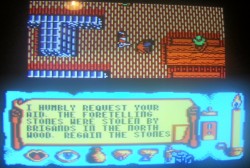
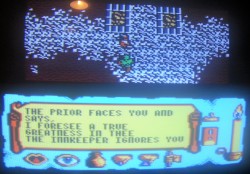
Once I’ve selected my character, the game proper loads in with the entire thing fitting into memory at one go with no need to ever load maps. The colours on the Amstrad are far better than those on the ZX Spectrum port and are pleasing enough to the eye. Both of these ports had a larger viewing window than the DOS version but smaller than the C64 original. The clarity of some of the sprites again leaves something to be desired and it’s not often easy to make out exactly who or what someone is, e.g. the monk in the left hand screenshot above.
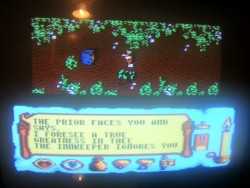
The worst example I saw is the green “things” that attack in the forests. Without digging out another version of the game to compare I can’t hazard a guess as to what they are – there is actually one below my character in the screenshot above which any casual observer would mistake for a patch of grass. When they are walking on grass these things are just about invisible. The Amstrad was quite a capable machine graphically and this sort of thing could easily have been fixed. It smacks of short cuts being taken when converting the sprites from the C64.
Another gameplay issue is that the fire button is the same to select from the menu, to go the next page of conversation text and to swing your sword. In combination with key presses being stored and a certain amount of lag in the game, this inevitably means that you end up taking a swing at the first person you talk to. The control scheme is an attempt to cope with a one button joystick no doubt but should have been tweaked when using the keys.
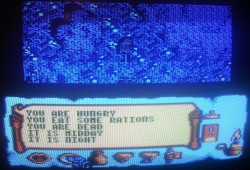
The pace of the game is fairly slow but after a few minutes to adjust I did start to relax into it and enjoy it for what it is. Graphical differences aside, this is nearly the same as the DOS port and perfectly playable if a little uninspiring. It could certainly do with some in-game sound being entirely silent after all the glorious intro music. One difference to the gameplay I did notice is that I remember learning to avoid combat after playing the original in DOS with monsters being endlessly spawned just off-screen while in the wilderness. The enemies are so easy to avoid in this version that it’s more a case of having to look for them or at least stand still until they catch up. This could well be a plus point if I was keen enough to try to finish the game as they ultimately end up just getting in the way.
That isn’t going to happen though as it would be more of a test of perseverance than anything else. Times Of Lore has its merits but was never Origin’s finest hour and if I ever play it again it will be either the NES or C64 versions. I don’t think this is the highest quality port either, it’s a little better than the Speccy version but could have been so much better with a little more effort and possibly a 128K version with some in-game sound/music. It certainly pales compared to the C64 original but this was still one of the better RPG style games on the CPC with very little competition. As such I think it was generally well received among Amstrad owners and press. As for the opinion in Amstrad Action magazine, they reviewed the game in their July 1989 edition where it received a more middling reception:-
